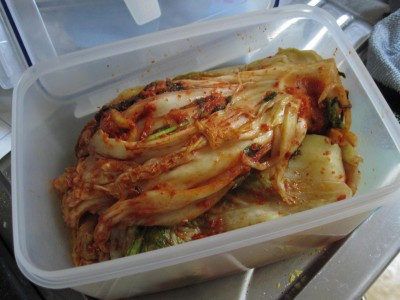A northern Illinois native, I've been teaching at a private English academy in Seoul, South Korea for over a year. Although elementary/middle school children don't attend until after their morning of public school, the preschool and kindergarten students attend full time and receive lunch at the academy. For almost my entire first year, I ate alongside the other teachers and students and learned much about typical Korean cuisine and nutrition. Since discovering Mrs. Q.'s blog last Fall, it's been fascinating to compare food and educational experiences across cultures.
作为一个北伊诺斯州人,我在韩国首尔的初级英语学院教学已经有一年了。尽管中小学生在公立学校中上完早上的才来参加,但是来自学前班和幼儿园的学生全天都在学院里并且午饭也再学院里吃。在我的第一年中的大多数时间,我都和别的老师和学生一起吃饭并且学到了很多关于典型韩国人的烹饪方法和营养学。自从去年秋天发现了Q女士的博客,我就陶醉于比较两种不同文化之间的实物和教育经验
My academy has hired lunch through two different caterers and it always consists of rice and at least one type of kimchi or stewed radish, among various side dishes. Kimchi is the traditional dish of Korea, and can take on a variety of appearances and flavors. The main ingredients are cabbage, which is fermented in large pots, and spicy pepper seasoning.
我的学院中的午饭是由两个不同的承包人来准备的,在各种各样的菜中总是有米饭和至少一种泡菜或着炖萝卜。泡菜是韩国传统的食物,它可以搭配各种佐料,也可以各种不同的形式呈现。泡菜的主要原料是卷心菜,人们把卷心菜放在坛子里,然后用辣椒给它调味

Homemade kimchi, gifted to me by a student. I didn't eat all of it, but I did enjoy servings on occasion until my ultra-cold refrigerator frosted it over!
自制的泡菜,这是一个学生给我的礼物。我没有把所有的都吃完,但我真的喜欢偶尔吃吃,直到我的超低温冰箱给它蒙上了一层霜。














